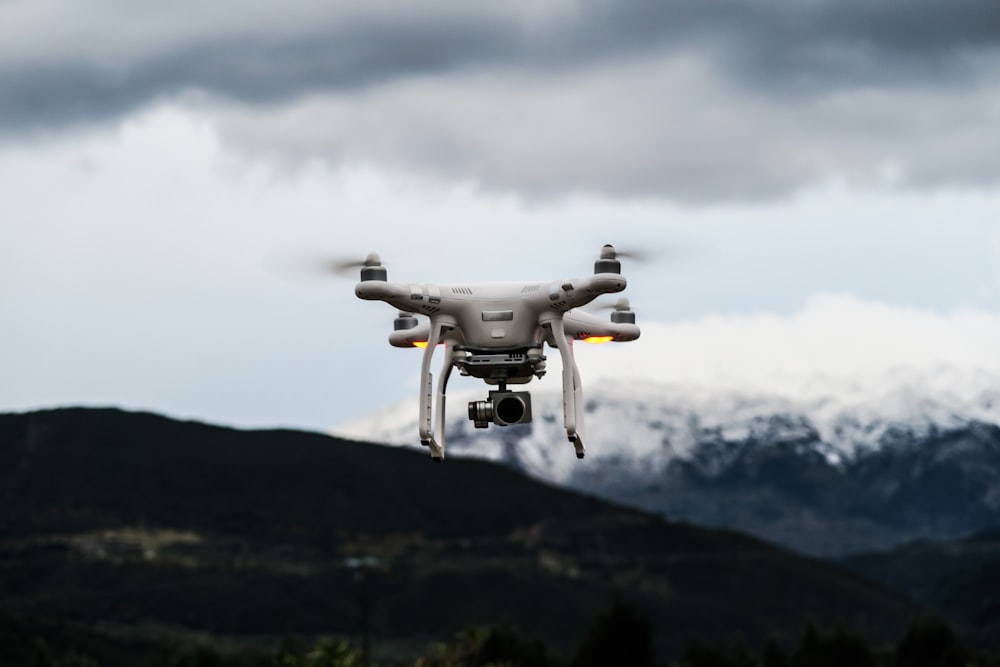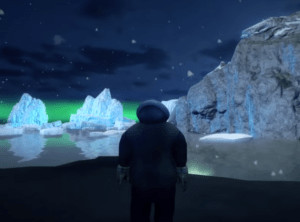In mid-September, Ryan Oliver of Pinnguaq (me!) visited the University of Tromsø in Tromsø, Norway as a part of the Arctic Modernities Conference. I spoke in a conference entitled “Indigenous Cultural Heritage and Technology in the Arctic”. In this video I speak on Feeding My Family, Nunavut Hunting Stories and the work Pinnguaq is doing.
A fascinating (if you find paint drying to be fascinating) video of the audio of the talk, along with my slideshow is here. Please enjoy.
If you’re one who prefers text, we’ve got you covered. Here is a transcript of Part 2. Please note I spoke “off the cuff” more than not at this event and the audio/video does not follow this prepared speech word for word, but certainly in theme/message. The written text below is far more elegant, but the audio above is far more human. Comments/criticism and feedback is always welcome. Please check out Part 1 of this blog!
Indigenous Cultural Heritage and Technology in the Arctic- Transcript
I really want to focus on two amazing initiatives that the advent of Facebook has done for decolonization in Nunavut. Feeding My Family is a movement created 2 years ago by Leesee Papatsi. It was created to bring attention to the high price of food in Nunavut and the response has been unreal. The Feeding My Family facebook group now has over 21,000 members from around the world. The issue made international headlines and went to #5 on Reddit’s main page.
The initial anger that drove the Facebook group has matured into daily sharing of food prices in each community, news from around the world on food prices and often healthy debate on what the root causes of these high prices are and what can be done about it. It created a political movement that forced government action and while food prices remain comparatively high to the rest of Canada, The Food Security Coalition in Nunavut has become a top political priority, as have annual food prices surveys.
At the same time a group called “Nunavut Hunting Stories of the Day” was created, which now boasts 43,000 members. Nunavummiut share pictures, videos and tales about recent hunting expeditions. It is an exchange of culture not only between communities and Inuit themselves, but also for the many members that watch from the other parts of the world. Here you can unashamedly see the value of the polar bear hunt, the humanity in the seal hunt and watch Inuit deal with conditions and animals most of us could only dream of.

Both of these Facebook groups are providing a voice on the international stage for Nunavummiut where there was none previously. No longer can Inuit and the people of Nunavut simply be talked about, or spoken for. There is no excuse anymore for Governments, NGOs or do gooders to simply do what they believe is best without consultation.
Feeding my Family gave a strong Inuit voice to the debate on Inuit food security, something that is largely debated and decided outside of Nunavut. Nunavummiut photographing the sticker price we all pay for things on a daily basis shocked the world into paying attention. And for every ill informed suggestion of “Well, you should just move”, came five new allies that helped spread the word around the world.
Traditions vs The Media
Nunavut Hunting Stories was bred out of the misrepresentation of the Inuit hunt by groups like PETA, the WWF, the Sea Shepherd society and the EU ban on seal products. It brought people to our front doors and allowed them to see first hand what was going on and how interwoven with the very fabric of daily life these animals and this tradition is in Nunavut. At the same time, looking inward, it has allowed Inuit from across Nunavut to share hunting traditions, to confirm with photographic and video evidence the stories of their elders and more often than not, some great laughs. This is Inuit at their best. Adapting a new technology and a new way of communication to reinforce traditional knowledge and strength within the community.
Adaptation to change is a proud Inuit cultural value and the way Inuit are turning the Internet around for their own use is incredible to watch. Despite this, Nunavut still exists very much in a world of someone else’s making. From a technological standpoint I started to notice this as my children aged and got into video games and as I began teaching programming across the territory. As I’ve said before, Nunavummiut love the same things that kids anywhere else do. But it dawned on me watching an older kid play Uncharted 2, an American action game for the PlayStation 3 that there are no experiences reflecting the life these kids are leading.
Pinnguaq’s Mission
There is also no support for their language in these experiences, there needs to be more representation for kids who don’t live the “average north american life”. This is where Pinnguaq started. Pinnguaq is a company I founded in 2013 to create authentic play experiences for Nunavummiut. It has since expanded into what I believe is our most important missions, bringing Inuit culture to life through technology for access by the wider world. There is nothing new to what we’re doing. It’s a natural expansion upon how Nunavut has been working with technology since the beginning. As a tool to further share and grow the incredible culture and ideas that make it up.
Pinnguaq, which means “play” in Inuktitut bases its company culture on the very values we are rooted in. We are consensus driven, inclusive and most importantly an accurate representation of those that have put their faith in us to represent them. I’m fortunate to have quite a large number of friends in the gaming industry and this is where we started.
In June 2013, we came together with Hemisphere Games to release an Inuktitut edition of the 2010 iPad Game of the Year, “Osmos”. The goal was simple. To start getting quality content out to Nunavummiut in their language. Instead of rushing out original content in Inuktitut that would be subpar, we were able to team with existing companies to bring quality content out right away and give a “shot across the bow” to the world that the Inuktitut language is something valuable to localize in. We followed it up by teaming with the board game, Robot Turtles, the most well funded board game in Kickstarter history to ensure their release was available in Inuktitut, and recently worked with Swedish company, Ludosity to bring their hit game “Ittle Dew” to Inuktitut as well.

This was a part of an Internal strategy to build capacity within the territory. Along with regular programming classes we’ve begun teaching our hope is to give kids the feeling they have a place in the game industry.
Change and Resurrection
Inuit have a long history of adapting to change and incorporating change into traditional life style. When snowmobiles were introduced, the Inuit of Nunavut did not shun them but rather embraced them. The speed and efficiency at which one could suddenly provide for ones family usurped any concerns about loss of traditional lifestyle. At the same time, dog teams are still kept and loved in every community across the territory.
But at the end of the day it is about survival, and the snowmobile allowed for that. Becoming a small engine mechanic became a matter of survival as a direct result of the introduction of snowmobiles. If a hunter is fifty kilometers from home and his machine breaks down, he must be able to put it back together, or risk the worst case scenarios. Embracing and understanding technology has always been about survival. I truly believe the same needs to and is happening with computers. Our world is moving online, and Inuit are adapting as well. But control of the technology, creation of original property is still happening by southern agents.

This is where I believe Pinnguaq will play a vital role moving forward. The stories from Nunavut, the culture, the language, the art, the people of Nunavut. We believe that there is international appeal to see this culture represented and represented well across the world. There is a market for Inuit culture and it will help sustain the internal growth in the territory. The logo for the 2010 Olympics was a symbol of Inuit culture.
The primary boat of choice of hippies and adventure tourists is an Inuit tool. People know Inuit culture exists and now we can take it digitally. Pinnguaq is trying to play our small part. And while I won’t be so bold as to claim the work we are doing is as important as that of Nunavut Hunting Stories or Feeding My Family, we operate on a similar principal. Providing a voice for Nunavummiut to be heard internationally.
What We Are Doing to Keep Inuit/Nunavut’s Culture Alive
In our case we’re using the medium of games to share and promote Inuit and Nunavut culture around the world. The stories, the artists, the people of Nunavut are one of a kind and we see the opportunity to not only create something positive for Nunavut, but also something market ready in the work we’re doing with Pinnguaq. This is Art Alive. A game we’re developing as a part of the Mobilizing Inuit Culture grant that Anna spoke of a few minutes ago. In this project we are delving into Nunavut’s long, 60+ year history of Inuit printmaking and telling its story. In this project we’re taking existing Inuit prints from the long history of printmaking in Pangnirtung, Cape Dorset and Baker Lake and digitized them. Then taken them apart and rebuild them into an interactive experience that tells the story of Inuit prints, its history, its artists and its importance.
Its as much an art history lesson as it an entertaining game to play. And that is an important point. First and foremost a game must be fun, whatever message, whatever theme you’re trying to emphasize if what your’e designing isn’t fun, it will not reach the audience you intend. So in that, we’re building a fun video game based around a very simple and comparatively old concept. Art Alive will bring Inuit culture in to homes around the world. We’re going to enable Inuit artists to share their vision, their work and their culture through a video game that can be played anywhere in the world.
The same concept is at work in another game we’re working with right now called “Qaluaplik”. This game is based on the Inuit Myth of Qalupalik in which Inuit parents told their kids to stay away from cracks in the ice, away from open water, lest they be kidnapped and taken into the underwater lair of the “Qaluaplik”. We’re working with Nunavut artists, storytellers and actors to bring this myth to life in a mainstream game around the myth.

Qaluaplik will again, first and foremost be fun. It will be comparable to existing games in the survival horror/stealth genre of games. But once we have the user hooked we can use it to share exciting stories of Inuit culture, Nunavut artists and actors in weaving this entire tale together. It will be a truly authentic retelling of the Myth, informed and based around Inuit values and traditions that guide our company to make a unique gaming experience. But again, based on mainstream expectations of what a gaming experience should be. The spoken language in the game will be Inuktitut, the mythology will be authentic and not exaggerated for the sake of entertainment. The beauty of this myth is it doesn’t need exaggeration. It is ready for prime time, as it is. Users will be driven deep into an important and long lasting part of Inuit cultural history.


